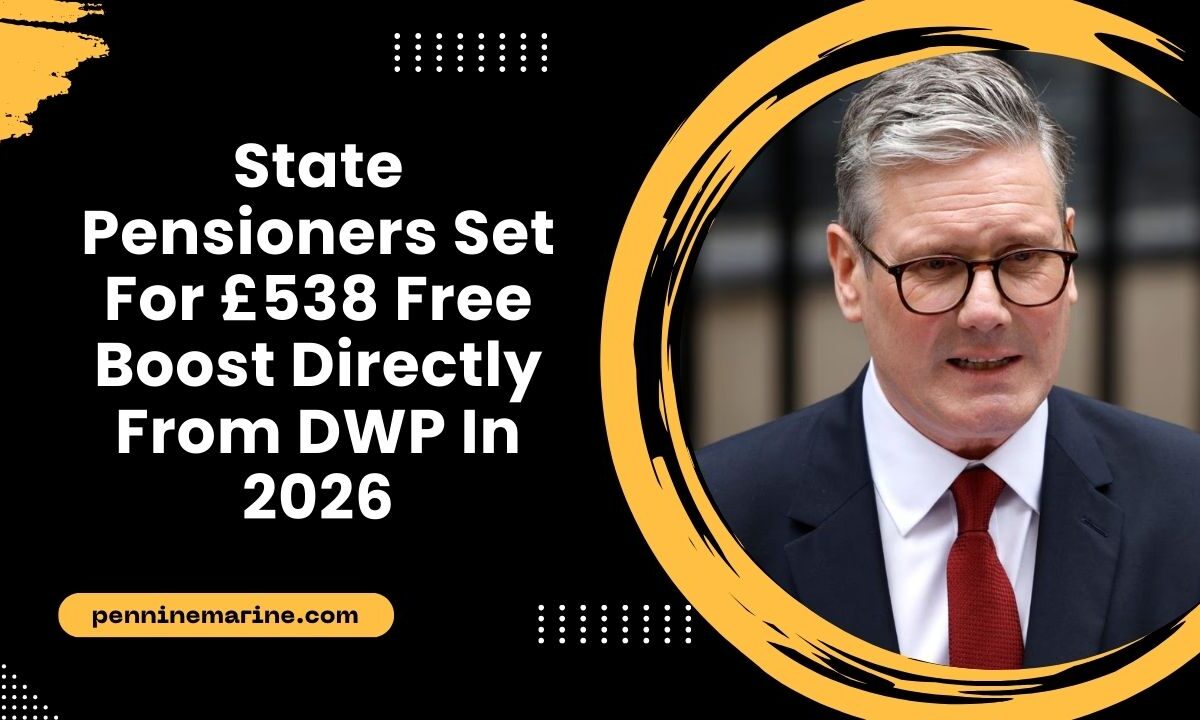The UK’s Triple Lock guarantees that the State Pension rises each April by whichever is highest: inflation, wage growth, or 2.5%.
Currently, wage growth at 4.6% is outpacing inflation, paving the way for a £478–£538 annual increase for new State Pension claimants starting in April 2026.
This upcoming boost will deposit an additional £10–£12 per week directly into pensioners’ bank accounts—representing vital financial relief amid rising living costs.
Understanding the Boost: Numbers at a Glance
| Pension Type | 2025 Weekly Rate | 2025 Annual Total | Projected 2026 Increase | Projected 2026 Annual Total |
|---|---|---|---|---|
| New State Pension | £230.25 | £11,973 | +£478 to +£538 | £12,451 to £12,512 |
| Basic State Pension | £176.45 | £9,175 | +£367 to +£413 | £9,542 to £9,588 |
With the anticipated 4–4.5% rise, recipients of the new State Pension could see their income increase to around £12,500 a year, while those on the basic State Pension will see a smaller uplift due to the lower starting amount.
What’s Behind the Numbers?
- The Triple Lock mechanism ensures pensions keep pace with real earnings or inflation, whichever is highest.
- Current earnings growth (4.6%) greatly exceeds inflation (≈3.8%), making it the driver of the 2026 uplift.
- This system is politically popular among retirees, though its long-term costs are becoming unsustainable, projected to exceed £15 billion per year by 2030.
Implications for Pensioners
- Nearly £11 more per week gives a much-needed boost to household budgets strained by energy, food, and bill increases.
- A projected £12,500 annual pension edges retirees very close to the personal tax allowance (£12,570)—raising the prospect of new tax liabilities.
- The basic pension uplift leaves a wider gap for older claimants, as they get proportionally less increase than newer pensioners.
What You Should Know
- Check your pension payments after April 2026 to ensure the increase is applied correctly.
- If your income crosses the personal allowance, you may become liable for income tax on your pension income for the first time.
- Understand your pension type (new vs basic) to anticipate the exact uplift you’ll see.
Key Figures and Highlights
| Detail | Value / Consequence |
|---|---|
| Expected Increase | 4.0% to 4.5% of current pension levels |
| New State Pension Weekly | From £230.25 to ~£240.84 (approx. +£10.50/week) |
| Basic Pension Weekly | From £176.45 to ~£184.50 (approx. +£8/week) |
| Annual New Pension Total | £12,451 to £12,512 |
| Personal Allowance Impact | Pension may exceed £12,570 threshold by 2027 |
| Policy Cost Concern | Triple Lock projected to cost £15bn/year by 2030 |
Thanks to strong wage growth, State Pensioners are poised to receive a generous £538 boost (approx.) from April 2026, thanks to the Triple Lock guarantee.
While this uplift is a welcome relief, new challenges emerge—especially as the new State Pension edges closer to the personal tax allowance, potentially resulting in the first wave of retirees paying tax on their pension income.
For those on the basic pension, the proportional increase remains much smaller, highlighting ongoing equity issues within the system. As the pension landscape evolves, staying informed will be essential.
FAQs
Why will my State Pension rise in 2026?
The Triple Lock ensures annual increases based on the highest of wage growth, inflation, or 2.5%. With earnings up 4.6%, that becomes the basis for next year’s uplift.
Could the pension increase push me into tax territory?
Yes. With a new estimated annual pension around £12,500, it will approach the £12,570 personal allowance. Income tax may apply once it exceeds this amount.
Are older pensioners getting the same boost?
No. While they receive the same percentage increase, starting from a lower weekly amount means their actual cash gain is smaller than that of new State Pensioners.

